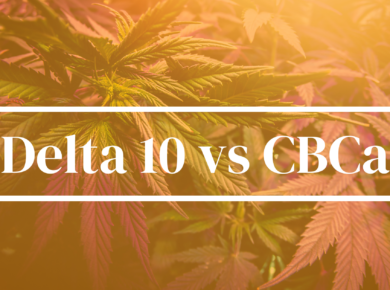In the ever-expanding universe of cannabinoids, CBDa (Cannabidiolic Acid) and CBNV (Cannabinovarin) stand out with their unique characteristics and applications. Both of these compounds are prevalent in hemp and cannabis, yet they present intriguing distinctions that warrant a closer look.
CBDa, the acidic precursor to CBD (Cannabidiol), is predominantly found in raw and unheated cannabis. It’s non-psychoactive and transforms into CBD through a process known as decarboxylation, which involves exposure to heat or sunlight.
Conversely, CBNV is a homolog of Cannabinol (CBN), a lesser-known and less studied cannabinoid. Though also non-psychoactive, CBNV appears in lower concentrations within the cannabis plant, making it a subject of curiosity among researchers and consumers alike.
Despite their similarities as non-psychoactive cannabinoids in hemp and cannabis, CBDa and CBNV differ notably in their chemical structures, concentrations, and the extent of research available on them.
Many States allow hemp derived cannabinoids under the 2018 Farm Bill as long as they contain less than .3% D9 THC. Some States have explicitly banned cannabinoids like Delta 8, so check your local rules and regulations before purchasing.
Here’s the rules for Kush.com and more details
Frequently Asked Questions (FAQs)
- What Are CBDa and CBNV? CBDa and CBNV are non-psychoactive cannabinoids found in hemp and cannabis. While CBDa is a precursor to CBD, converting into it through decarboxylation, CBNV is a variant of CBN and is less commonly found in the plant.
- How Are CBDa and CBNV Extracted? Both cannabinoids are typically extracted using CO2 extraction methods, ensuring the preservation and purity of the cannabinoid while utilizing carbon dioxide under high pressure and extremely low temperatures.
- What Differentiates CBDa from CBNV? CBDa and CBNV have distinct chemical structures and prevalence within hemp and cannabis. CBDa is readily found in raw hemp and is known for converting into CBD, while CBNV is a rarer, less studied variant of CBN.
- Are CBDa and CBNV Present in All Hemp Strains? CBDa is widely found in various hemp strains, whereas CBNV may not be as prevalent across all strains. Their presence and concentration can significantly differ depending on the specific strain.
- How Do CBDa and CBNV Affect the Body? Without making specific claims about the effects of CBDa and CBNV, it’s crucial to acknowledge that each cannabinoid interacts uniquely with the endocannabinoid system. For detailed information, consulting a healthcare professional is advisable.
Medical Disclaimer
The information presented is for educational purposes only and is not a substitute for professional medical advice. Always consult your healthcare provider before utilizing any CBDa or CBNV products.
Where to Buy
CBDa and CBNV products can be found both online and in certain physical stores. Ensure to verify your local laws before proceeding with any purchase.
Shop




